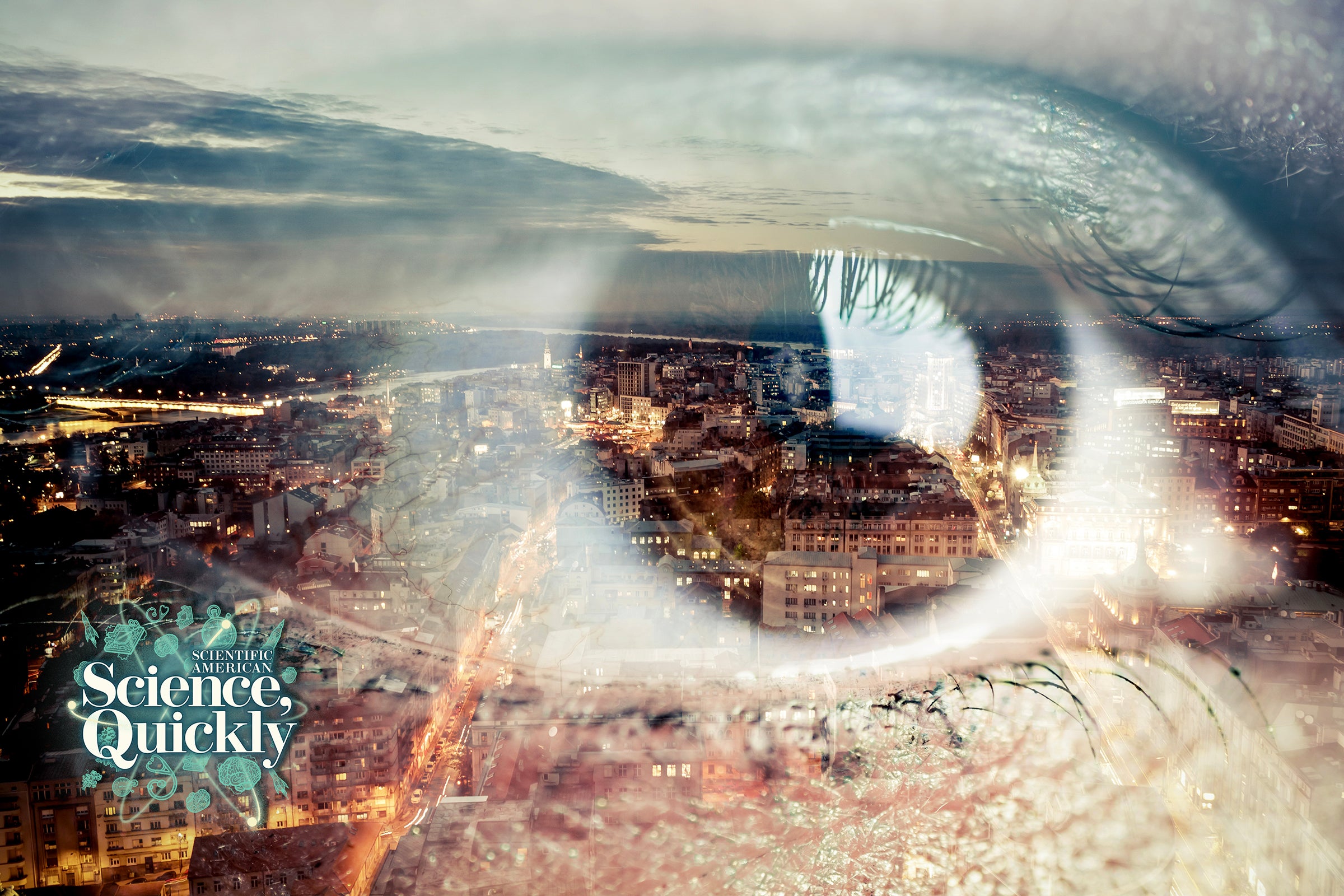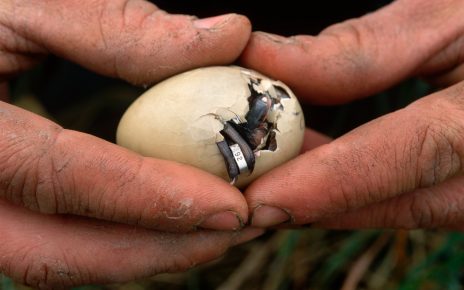
This is Science, Quickly, a podcast from Scientific American. I’m Stefano Montali.
If I asked you to visualize, say, Harry Potter, you’d probably have no problem picturing him in your mind: a teenage wizard with black hair, glasses, a thunderbolt-shaped scar on his forehead and a wand in his hand. It would almost be as if you were pulling up a photograph in your head.
This ability to visualize is often called the “mind’s eye,” and most people would say it’s as inherent as breathing. But it turns out that’s not quite true. Estimates say about 1 percent of the population lives with an extreme form of a condition called aphantasia. Those who have it can’t visualize anything in their head.
Joel Pearson: So when they try and imagine and think about what an apple looks like, it’s just nothing. It’s black on black. For example, when I think about an apple, I can catch up a conscious experience of an apple. I can see a stem. I can see a leaf. I can see a drop of water on there. It’s not like holding an apple in my hand, but I have an experience of an apple. Someone with aphantasia doesn’t have that experience.
Montali: Joel Pearson is a professor of cognitive neuroscience and director of the Future Minds Lab at the University of New South Wales in Australia. He’s been studying mental imagery, including in the context of aphantasia, and cognition since 2008. One of the main questions, he says, has always been finding a way to accurately measure it.
Pearson: Back then almost no one was studying visual imagery, because it was so hard to measure, right? It was just questionnaires and maybe an interview.
The problem with questionnaires is that you and me could both imagine an apple. And our imagery could be exactly the same. But I might rate it a “4,” and you might rate it a “1,” even though we consciously internally experienced the exact same thing—or vice versa: maybe we have totally different imagery and both rated [it] as “2.” So that’s kind of the inherent problem of metacognition when it comes to questionnaires. So a lot of what we do with Future Minds Lab is trying to develop new ways of measuring the mind—objective, reliable ways, like a microscope for the mind or a blood test to measure the mind.
Montali: One of the lab’s experiments explored how a lack of mental imagery affects the way people with aphantasia respond in a hypothetical stressful situation.
Pearson: We did another experiment, which was having people come into a dark room and read these scary stories on the screen. We found that people with imagery, when we measure their skin conductance response, get this nice escalating response during the story. Those with aphantasia get sort of a flatlining, bumpy thing, whereas if we show both those groups scary images on the screen, both groups go up. So when it’s perceptual, no real difference. When it’s words on the screen, a role for mental imagery is a clear difference.
Montali: Building on this research, Pearson and his team then recruited people with aphantasia from the Sydney, Australia, area to come to the lab for another experiment. This time, he asked the participants to imagine a dark object and then a light one.
Pearson: Your pupil contracts when you’re imagining the bright thing just like it does if I look up at the light. And with imagery, their pupil was different in the light condition. No imagery, with aphantasia, there’s no real difference there.
Montali: For a person to be able to volunteer for this type of experiment, they first have to realize that they have aphantasia. But how do you know that you can’t visualize if you don’t even know that other people can? Quite often, Pearson says, the epiphany takes place in a meditation class.
Pearson: The teacher will be saying, “Now picture this and picture that.” And they’ll be getting more and more frustrated, saying, “They keep saying that. What do they mean? I can’t picture that.” I compare it to people discovering they’re color-blind. They just don’t know what they’re missing until someone describes, somehow, the vivid experience of color. Then they go, “Oh, wait, what?”
Montali: On a brighter note, though, there are many successful, creative people that live with the condition. Pixar co-founder Ed Catmull is one. Glen Keane, a character animator behind films such as The Little Mermaid and Beauty and the Beast, is another. So is there a connection between imagery, aphantasia and creativity?
Pearson: I get lots of e-mails from people saying, “Oh my God, I’ve realized I have aphantasia. That’s why I’m not creative.” There doesn’t seem to be any roadblocks there. In fact, we’re running a creativity study now here in Future Minds, and again, the data does not support any difference in creativity measures for those with aphantasia. So even though people tend to sort of have some intuition—they think that there should be a lack of creativity in aphantasia, the data doesn’t support that so far.
Montali: Living without mental imagery might seem like a disadvantage, butPearson says there are benefits as well—especially in terms of those living with anxiety disorders such as post-traumatic stress disorder, or PTSD.
Pearson: All the data we have so far suggests that the more vivid your imagery is, the more prone you are to develop PTSD after a trauma. So there’s a couple of things already pointing to the fact that things around anxiety are going to be different and less so without imagery.
Montali: But what about good memories? Do they stick around? Pearson says yes, just in a different way.
Pearson: So that can take on a number of different semantics, ideas, concepts, spatial locations, emotions and sometimes different senses. So you can break aphantasia up into multisensory aphantasia—so let’s blind across all the senses—whileor pure visual aphantasia. So while people’s lifelong memories have less details if they have aphantasia, they’re still there. It’s not catastrophic. Their memories aren’t lost. They just take on a different format.
Montali: Thanks for listening. For Scientific American’s 60-Second Science, I’m Stefano Montali.


